

Matt Campbell
2025 Porsche 911 Carrera T review
5 Days Ago
The long wait for a spiritual replacement for the T1 Combi is over. Say hi to the all-electric Volkswagen ID. Buzz.

Journalist
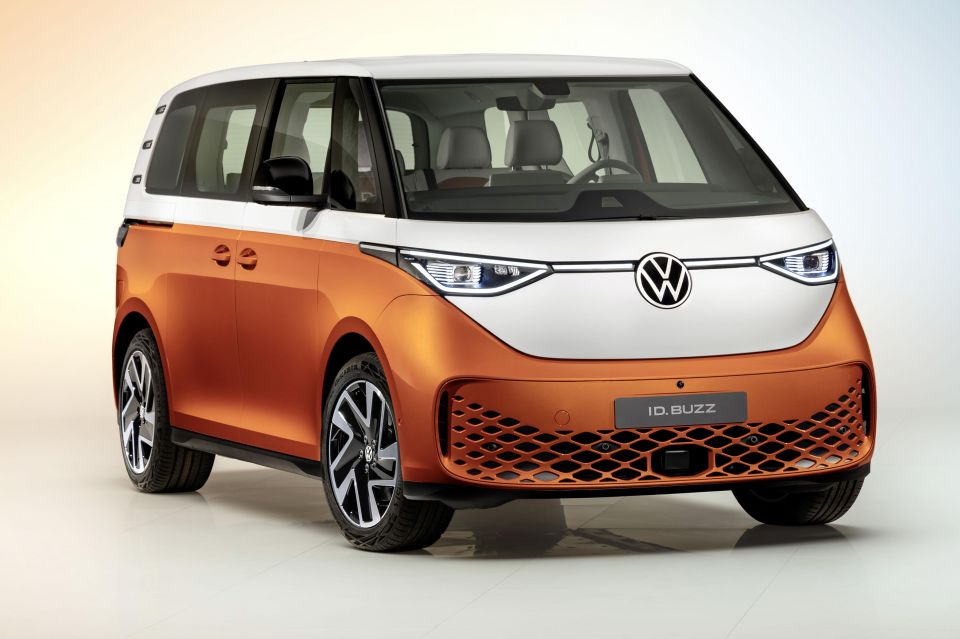

Journalist
The spirit and the design of the Kombi — known as the Bulli in Europe and Microbus in the States — is back with the new Volkswagen ID. Buzz.
Australian availability or timing has yet to be confirmed, but Volkswagen Australia has previous shown interest in the car. We believe the firm is planning to reveal more details about the local launch of the ID. family in the next month or so.
The ID. Buzz will initially be available in two flavours: a people mover variant, and a Cargo version. The Cargo model has a flat load space, a partition dividing the front seats from the cargo area, and blanked-out rear side windows.
While the people mover has sliding doors on both sides, the Cargo only has a sliding door on the right — the passenger’s side for left-hand drive vehicles. Up front, the Cargo can be bought with either two or three seats.
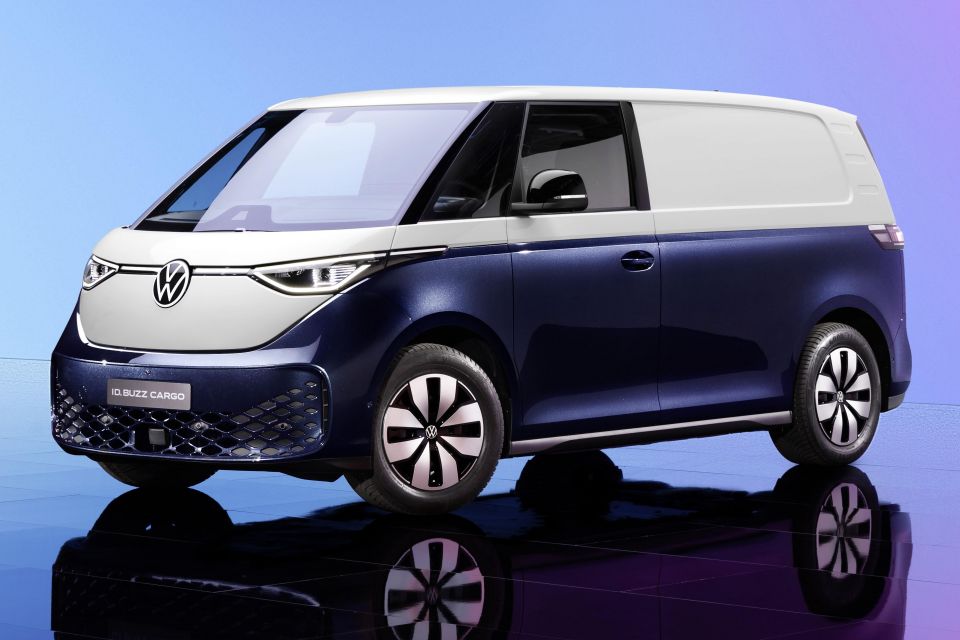
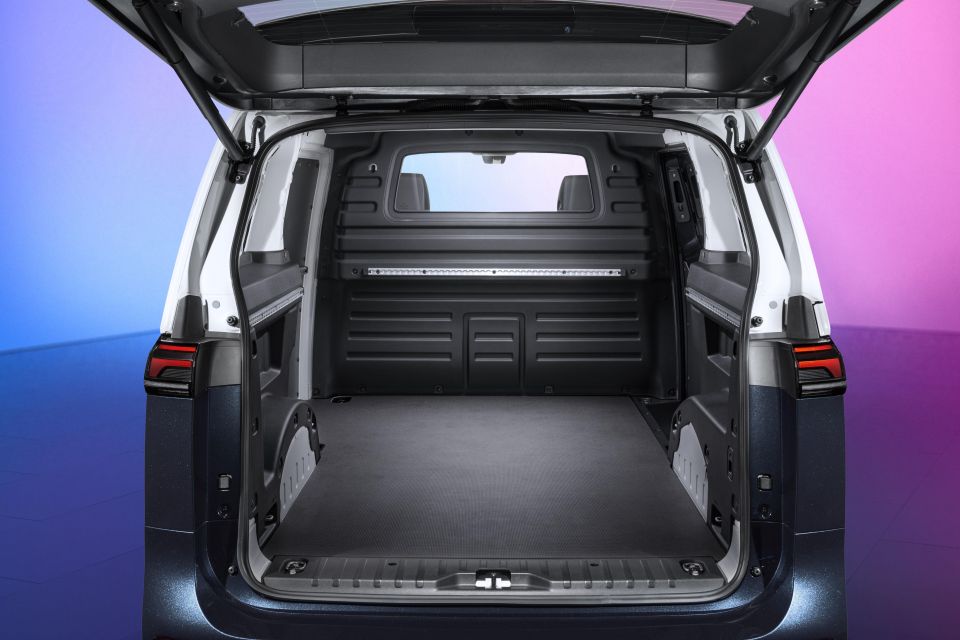
Volkswagen says the Buzz people mover can carry 1121L of stuff in the boot with all seats in play, and 2205L when the rear seats are folded down.
The Cargo’s, umm, cargo area can accommodate up to 3900L, and will fit two euro pallets when loaded transversely.
The ID. Buzz is 4712mm long, 1938mm tall, 1985mm wide, and rides on a 2988mm wheelbase. The turning circle is said to be just 11.1m.
Despite its tall, boxy body, the ID. Buzz has coefficient of drag of just 0.285. The 2003 Toyota Prius, with its distinctive Kammback profile, slipped through with a drag coefficient of 0.26.

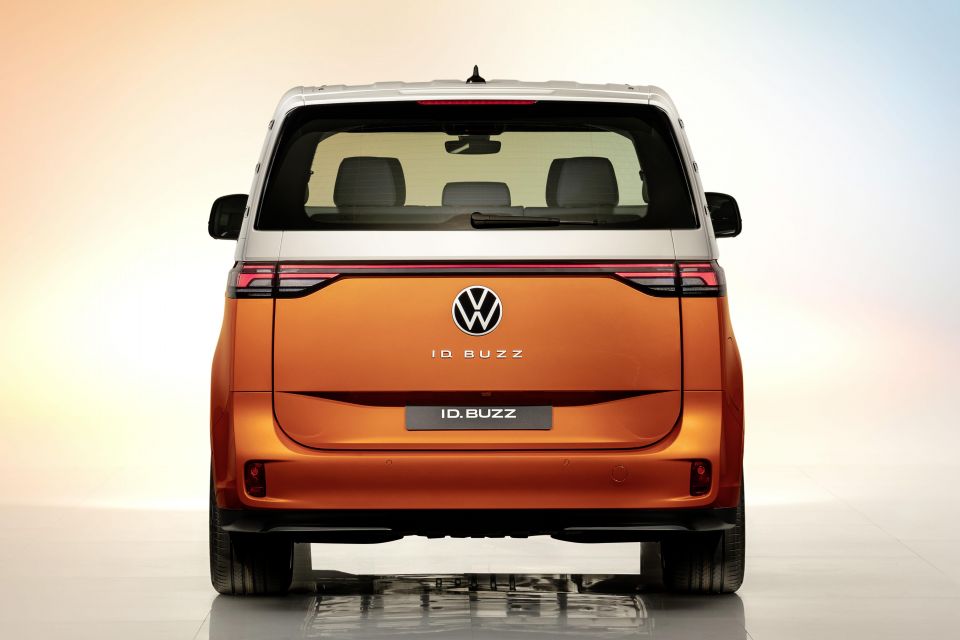
Like other ID. models, as well as Cupra Born, Audi Q4 e-tron, and Skoda Enyaq, the Buzz is based on Volkswagen’s all-electric MEB architecture.
While these other models are available with a plethora of drivetrain and battery choices, for its launch in Europe there will be just one ID. Buzz offering with a 150kW/310Nm electric motor driving the rear wheels.
This is hooked up to a 77kWh battery pack that supports 11kW AC charging and 170kW DC charging. Connected to a rapid charger, the ID. Buzz can be topped up to 80 per cent charge within 30 minutes.
The Buzz is the first MEB product to support bi-directional charging, allowing the car to put unneeded energy back into electricity grid. If timed correctly, it could allow Buzz owners to reduce their energy costs.
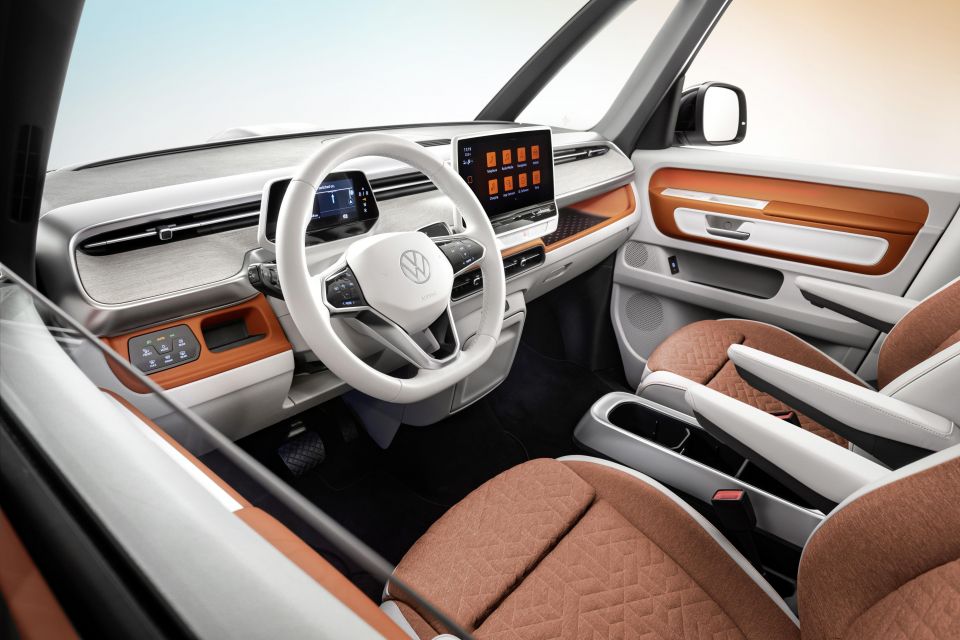
With a “future” software update, the ID. Buzz will support Volkswagen’s new ‘Plug & Charge’ feature which automatically authenticates the car with a DC fast charger when it’s plugged in, saving owners the hassle of signing up whenever they use a different provider network.
Styling is clearly derived from the 2017 concept car, but some styling cues from the ID.3 hatch and ID.4 crossover have found their way in, primarily with the shape of the headlights.
Like the ID.3 and ID.4, the Buzz features a small digital instrumentation display ahead of the driver, and a slightly larger touchscreen infotainment system in a freestanding pod on the dashboard.
Some may be disappointed to see the Buzz continues with the ID. family’s tradition of using capacitive buttons on the steering wheel and dashboard.
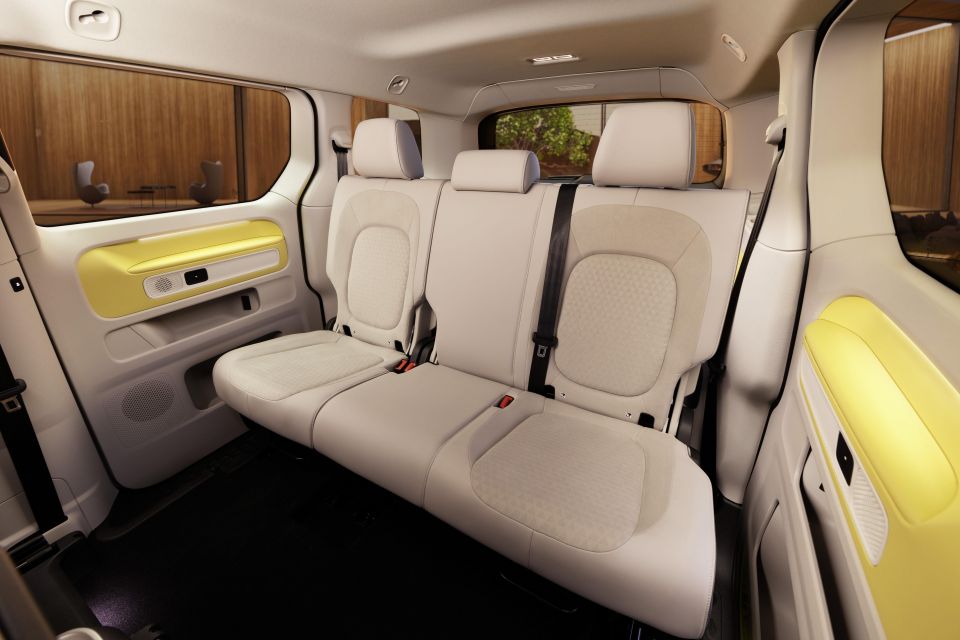
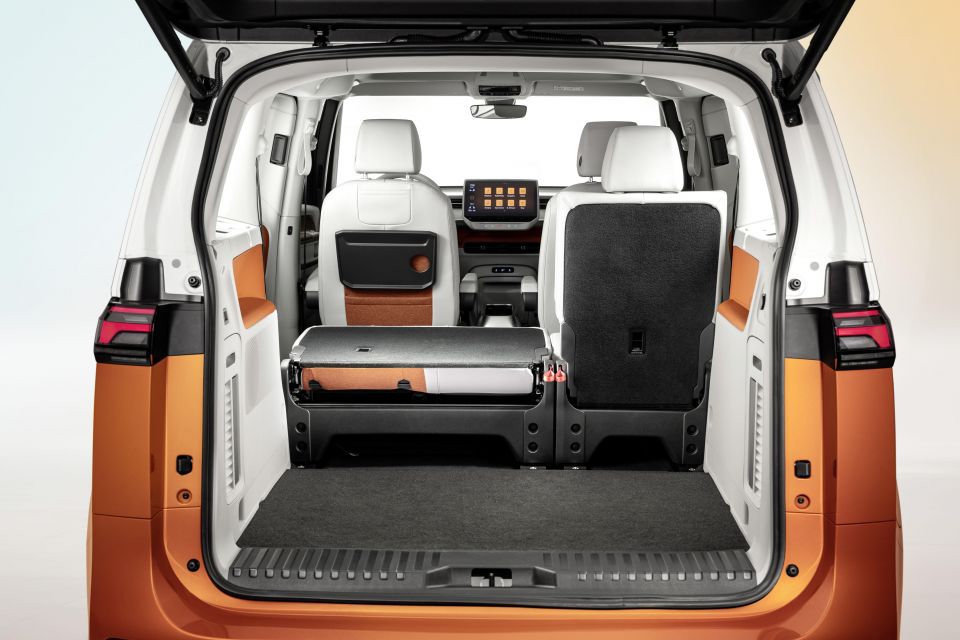
While the other ID. models are quite straight-laced, Volkswagen has tried to inject a bit fun and whimsy into the Buzz.
As teased earlier this week, the ID. Buzz has happy faces and stylised drawings of itself scattered throughout the cabin. The people mover also includes a built-in bottle opener and ice scraper.
For the exterior there are seven single-tone paint options, and four two-tone choices. The exterior colour scheme can be optionally carried through to the interior via the dash panel, door trim and seat coverings.
The Buzz also features the Volkswagen brand’s first vegan-friendly interior. It includes leather-like polyurethane steering wheel trim, and seat upholstery, headliner, and floor coverings made from recycled materials.
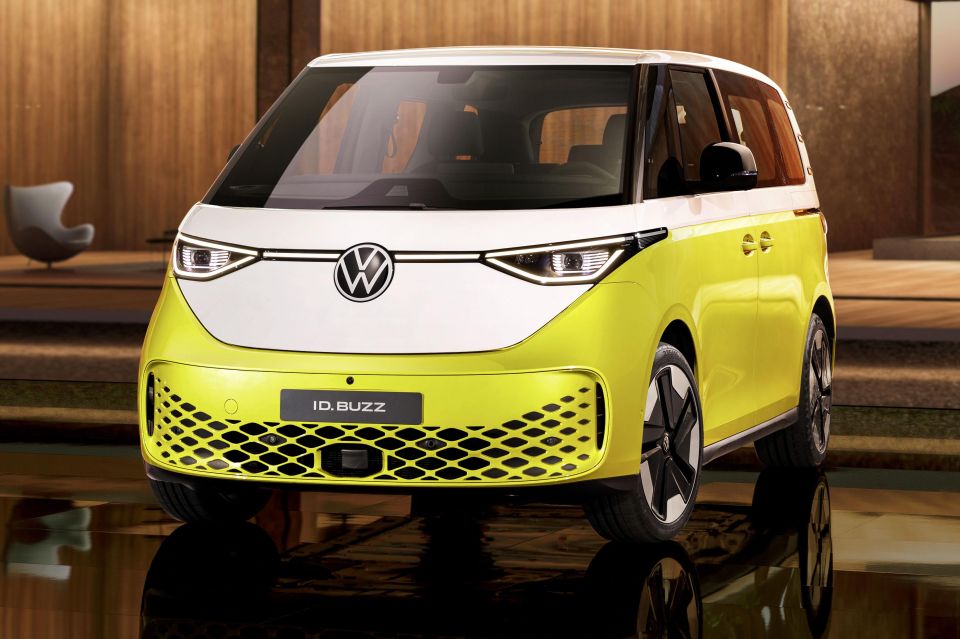
Safety features include autonomous emergency braking, lane keeping assist, and a memory function for automated parking on previously saved routes. When equipped with Car2X — or car to anything — communication, the Buzz can help generate and benefit from “swarm data”.
According to Carsten Intra, head of Volkswagen Commercial Vehicles, the “manufacture and shipping [of the ID. Buzz and ID. Buzz Cargo] has a carbon-neutral footprint“.
In Europe the ID. Buzz and ID. Buzz Cargo will be available to order in May, but deliveries won’t begin until the northern autumn.
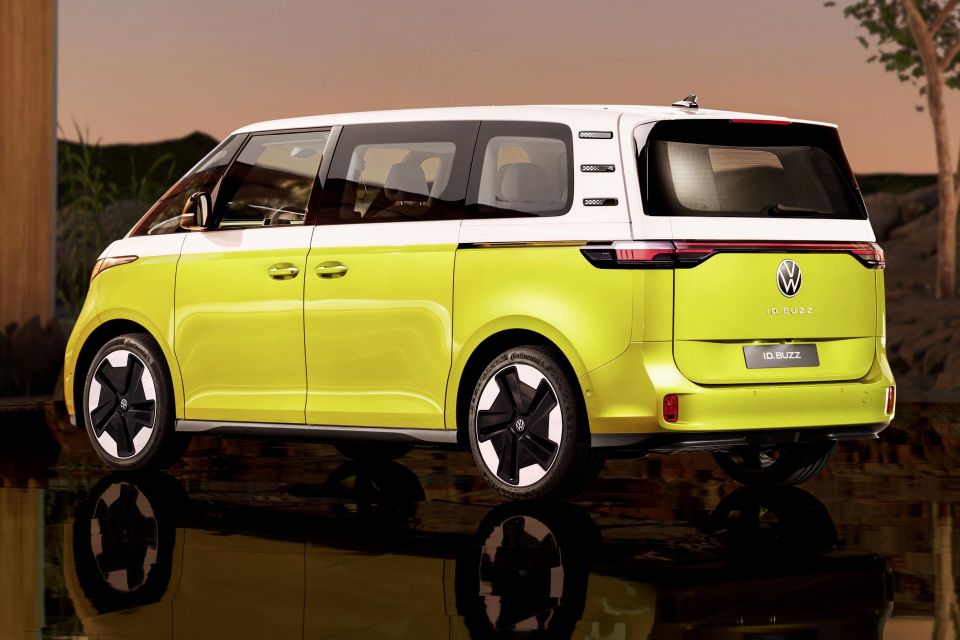
A long wheelbase model with three rows of seating, primarily aimed at the US and Canada, will debut in the not-too-distant future.
The ID. Buzz will be built at Volkswagen Commercial Vehicle plant in Hannover, rather than the Dresden facility that produces the ID.3 and ID.4.
Where expert car reviews meet expert car buying – CarExpert gives you trusted advice, personalised service and real savings on your next new car.
Derek Fung would love to tell you about his multiple degrees, but he's too busy writing up some news right now. In his spare time Derek loves chasing automotive rabbits down the hole. Based in New York, New York, Derek loves to travel and is very much a window not an aisle person.


Matt Campbell
5 Days Ago


James Wong
4 Days Ago


Max Davies
3 Days Ago


Josh Nevett
2 Days Ago


Josh Nevett
1 Day Ago


William Stopford
19 Hours Ago